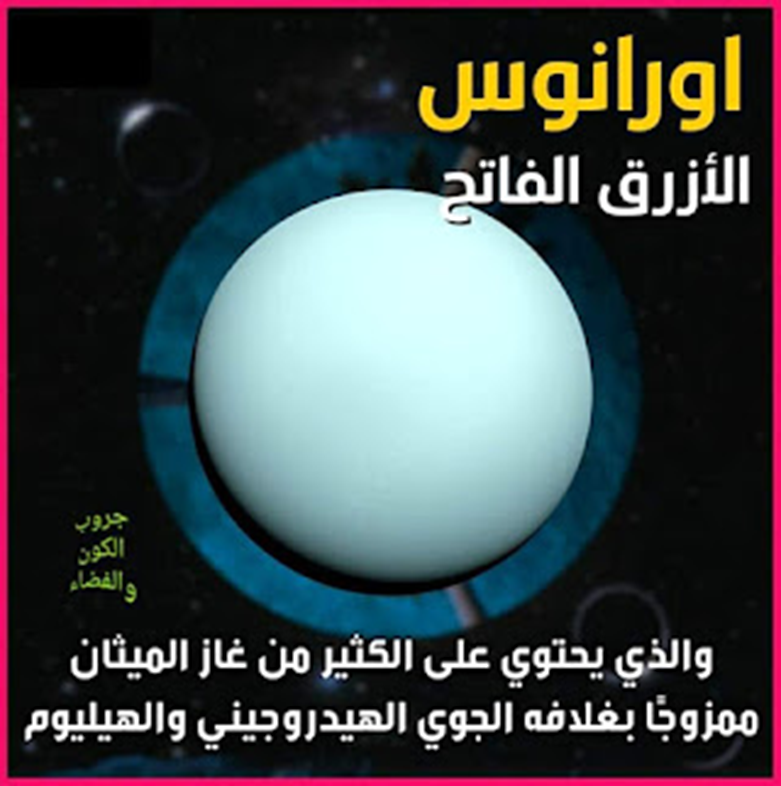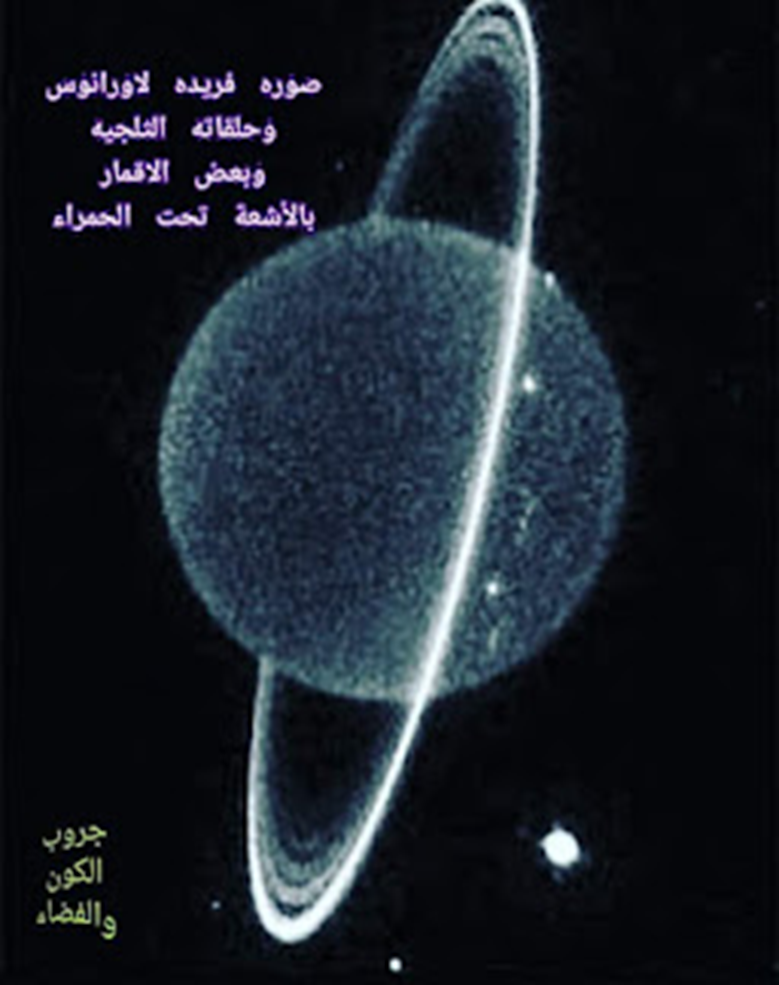Odd orbit of Uranus

Odd orbit of Uranus
After observing the planet Uranus, astronomers recorded a difference from the rest of the planets in its rotation around itself, as it rotates on its side, horizontally, and not like the rest of the planets in the solar system.
This affects the rotation of its many satellites and the location of their orbits around it.
Astronomical calculations show:
That this giant gaseous planet collided with an old ice asteroid of large size, and this event played a major role in that strange behavior of the planet Uranus
Discovery of Uranus
280 years ago, the planet Uranus was discovered.
The seventh planet in the solar system, Uranus was discovered by the British-German astronomer William Herschel on March 13, 1781.
At first Herschel thought he had discovered a new comet, then later realized that it was a new planet orbiting the sun, thus Uranus became the first planet to be found since ancient times.
The strange orbit of Uranus, the discovery of Uranus, how it was called Uranus, the theory of the collision of Uranus, the strange rotation of Uranus

?How was Uranus named
Herschel suggested naming the planet Georguim sidus "George's star" or the Georgian planet after King George III.
After years of discussion among scientists, astronomers decided to follow the tradition of naming the planets for the ancient gods, and they were named in honor of the ancient god of the sky.
"Uranus".
Uranus collision theory
These details of the theory were contained in a scientific article published in the space research journal, Nature Astronomy.
Strange rotation of Uranus
The strange behavior of the planet Uranus has been the subject of research and interest of scientists since its discovery.
The axis of rotation of this planet is parallel to the plane of the orbit. The celestial body Uranus literally rotates in its orbit while lying on its side.
Giant Uranus (like Venus) rotates on its axis in the same direction as the rotation clockwise, not counterclockwise like the rest of the planets in the solar system.
Scientists and astronomers suspected that the reason for this strange rotational behavior was the collision with another asteroid in its stage
precedent for the formation of the planet.
The moons of Uranus
Uranus has 27 moons to date, and the orbits of 18 of them are located at the level of the planet's equator.
In simpler terms, the lunar orbits also move sideways. The rings of Uranus rotate in the same direction.
These moons were formed as a result of the violence and effects of the collision, which caused the planet Uranus to tilt to its side.
This violent collision caused the evaporation of large amounts of matter from the planet Uranus itself and its "adversary colliding with it."
And the effects of this collision formed a dusty disk at the level of the equator of the planet Uranus, and gradually parts of this scattered material fell on the planet Uranus, and the known moons and the famous rings were formed around it from the other part of the disk.
Simulation of the collision of Uranus
Computer simulations of this scenario showed that the mass of the disk must be hundreds of times greater than the total mass of the satellites of Uranus formed around it.
Now, the research of a group of astronomers has drawn attention to a criterion that researchers did not pay attention to in the past, which is the chemical composition of gaseous planets in this outer part of the solar system.

The size of the planet Uranus is about 60 times the size of the planet Earth
Uranus rating
Uranus belongs to the group of planets of ice giants. This icy planetary structure is typical of the far reaches of the solar system.
So we can assume that the planet colliding with Uranus also consists of the same gaseous composition.
Uranus chemical composition
The basic elements are water, ammonia, methane and other similar substances that quickly turn into a gaseous state.

And it needs a little heat to turn into gas, and a little hypothermia or cold to become solid ice again, and so on periodically.
collision theory
In light of the hypothesis of the collision of the planet Uranus with a transiting icy asteroid, the resulting condensing gas disk began to form moons, and almost all the materials resulting from the impact had fallen on Uranus, and some of them were scattered to the surrounding space.
Using observational data, the researchers simulated the collision of the giant planet Uranus with an icy asteroid
And they obtained a hypothetical perception of the reason for the tilt of the planet Uranus
Strange horizon...
This video is for clarification
The atmosphere of the planet Uranus
rain on Uranus
A scientific experiment confirms that the sky is raining diamonds on the planet Uranus
It's something that scientists have long suspected, but never confirmed, that it has to do with a rain of solid diamonds, exactly, in the oceans and depths of the planet Uranus.
And now, researchers at Stanford University in California, USA, believe that huge amounts of diamonds, perhaps millions of carats, are actually sinking in the vicinity of the planet Uranus.
The reason for this new belief relates to an experiment simulating conditions on planets with icy gases, such as Uranus and, to a lesser extent, Neptune.
After this experiment, scientists noticed the phenomenon of diamond rain, which is formed under high pressure conditions, when the hydrogen and carbon interactions generate diamond atoms.
?What happens to diamond rain
As for the planet Uranus, on the hypothetical side, diamonds that form as rain, make their way to go slowly and then sink into the planet's interior.
These sparkling rains are believed to originate more than 5,000 miles below the surfaces of Uranus and Neptune, where the two planets' interior conditions are similar.
"Previously, researchers could have assumed that diamonds are forming on the planet," said Dominic Krause, a co-scientist and author of the research.
"But when I saw the results of this latest experiment, it was one of the best moments of my scientific life," he added.
In the experiment, the scientists were able to see that almost every carbon atom was fusing with the hydrogen, forming diamond structures as small as a few nanometers.
thick layer around the nucleus of Uranus
The researchers also believe that it is possible, over thousands of years, that the formed diamonds were slowly sinking into the planet's ice layers, to gather in a thick layer around the planet's core.
Uranus is the seventh planet in terms of distance from the sun.
In January 1986, NASA's Voyager 2 spacecraft flew by the planet and took the first pictures of the planet.
Source: websites

